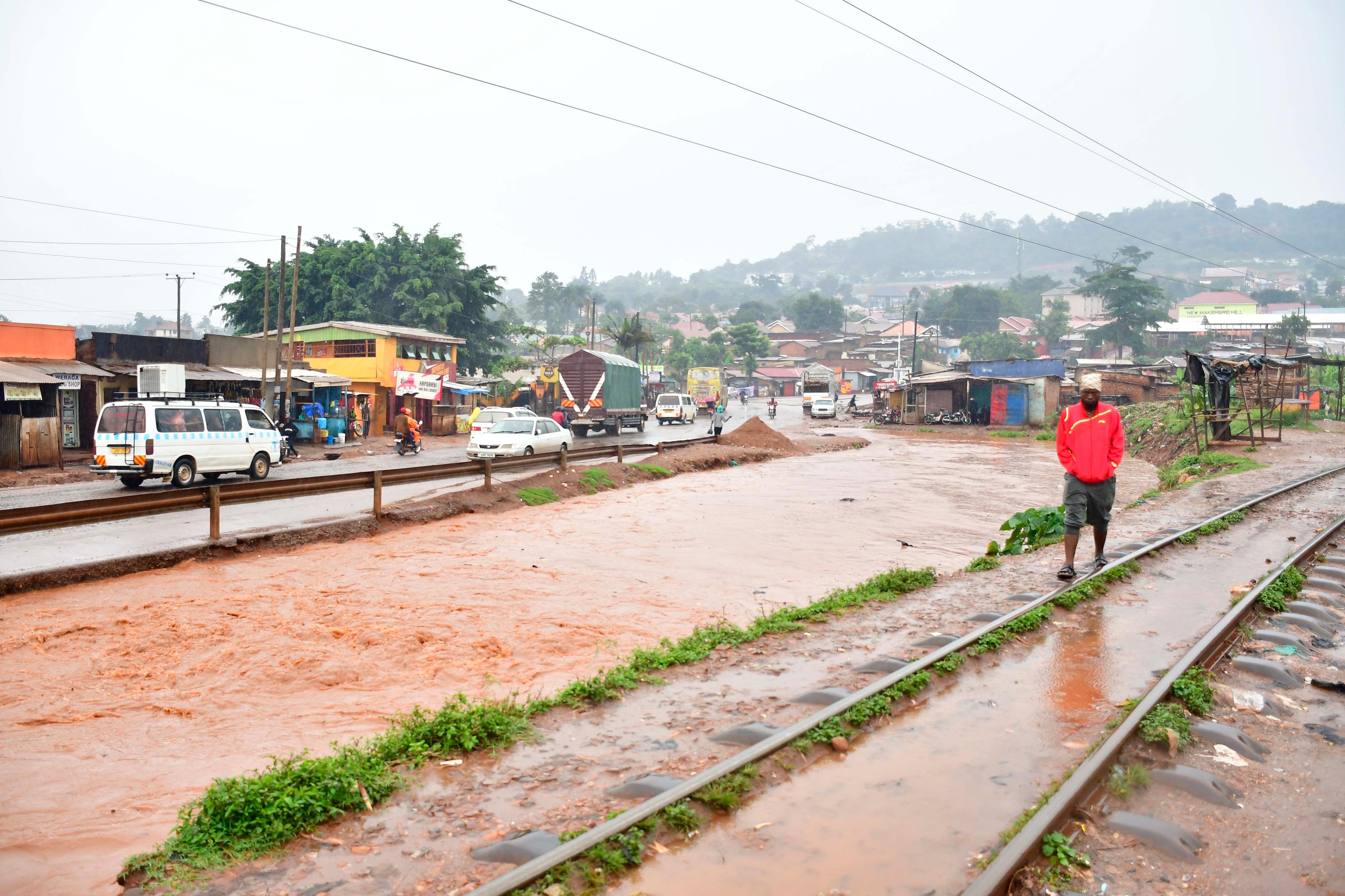Kampala flooding can be resolved permanently

A man walks in Kampala City on March 14, 2023 following downpour. Several roads in the city become unmotorable on rainy days. PHOTO/STEPHEN OTAGE
What you need to know:
- The issue: Kampala flooding.
- Our view: Kampala residents have to remember that a plastic bottle they throwing outside their car window could one day cost someone’s life, or costly repairs for that very car they are driving.
On Tuesday this week, heavy rain pounded Kampala and its surrounding areas for most parts of the morning. And as it has always been during such downpour, there was bad news to follow.
A two-year-old boy drowned in Najjera in a trench just outside his caretaker’s house. Traffic was disrupted for hours as floods cut off major roads leading to the city. According to deputy Kampala Metropolitan Police spokesperson Luke Owoyesigyire, properties worth millions of shillings were destroyed as water entered people’s homes, shops and offices.
But this is not the first time that floods have caused havoc in Kampala. In fact, it has become a norm that whenever the rainy season starts, lives are lost and properties destroyed by the city floods.
And some of the stories are too painful to forget. In May 2020, 56-year-old Cissy Namukasa, a market vendor, drowned in Nakawa drainage channel during a downpour.
Footage from security cameras showed Namukasa falling in a trench and being washed away towards Industrial Area by fast running water. It took nine months for the body to be found and handed to her relatives.
Flood-prone areas around the city are known by the authorities. Suburbs such as Kasubi, Katanga, Kisenyi, Nalukolongo, Kabuusu, Katwe, Namungoona, and Kinawataka, among others, are some of the most affected places. Others include Queen’s Way, Ssebaana Kizito Road (former Nakivubo Mews), Kabuusu junction, Jinja Road roundabout and Kyambogo-Banda.
Since its establishment in 2011, Kampala Capital City Authority (KCCA) has upgraded a number of drainage channels to divert floods. Currently, KCCA is constructing city roads and upgrading drainage channels in all the five divisions to improve urban mobility and reduce flooding. However, given what we witnessed this week, the flooding problem seems far from over.
To save both lives and properties, both Kampala residents and authorities need to join hands. Kampala’s wetlands, which are supposed to act as catchment areas, are gone. People have encroached on these wetlands and built homes and industries. Despite several warnings by the President for eviction of encroachers, the lawbreakers seem to only become bolder.
Then the other problem is mismanagement of waste in the city. A lot of money has been poured into the upgrading of drainage channels, but tonnes of garbage, especially polythene bags and plastic bottles, block these channels during heavy rains.
Kampala residents have to remember that a plastic bottle they are throwing outside their car window could one day cost someone’s life, or result in costly repairs for that very car they are driving. Flooding in Kampala can be controlled. We must not lose a life every time it rains.




